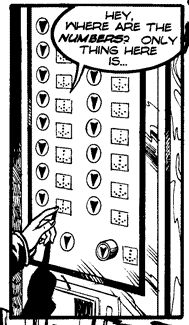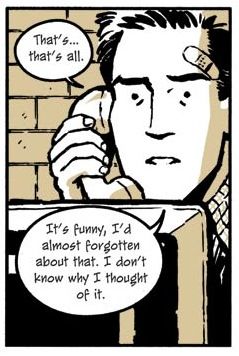When it comes to horror, I’m not really a fan of zombies, vampires, or exploding eyeballs. I prefer the more subtle type of horror, the kind that walks a line between everyday life and something much darker. The kind where everything seems normal until… suddenly it isn't. Like this moment in Pete Stathis's Evenfall: Phoebe, the heroine, keeps slipping from everyday life into an alternate reality, and this is a signal that it’s happening again: She steps into the elevator and all the buttons have changed to down arrows.
Now that's creepy.
Evenfall is full of moments like those. Phoebe is dealing with the death of her mother, and she has had to drop out of school to run her mother’s business. She is depressed, she drinks too much, and lashes out at those around her. And then, as she is clearing out a clogged drain in the basement of a rental property, a hand reaches out and grabs her by the ankle, dragging her into an alternate world. For all of book 1, she slides back and forth between normal life and a twisted nightmare world. These dreamlike episodes are night terrors that walk in the day: Phoebe hurtles through space, escapes from grasping claws, relives her mother's last illness, and almost forgets her sadness as she fights to survive. It’s great stuff, a powerful literary portrayal of depression and loss, with the supernatural elements reinforcing the feeling of unreality that depression brings on. The story moves in more of a straightforward fantasy direction in book 2, and then the comic ends abruptly. Even without a resolution, though, book 1 is good reading for the dreamlike atmosphere it evokes.
Warren Pleece’s episodic Montague Terrace is series of very short stories about the varied denizens of the titular building: A sinister puppeteer who controls the world, a washed-up folkie who dreams of humiliating his former manager, a floundering magician who is comforted by his taking magic rabbit (who has demons of his own). Pleece uses a subtler blend of everyday scenes and dreamlike twists than Stathis; his people are tired and shabby, but while there is drama in every piece. My favorite story so far is "Codename Babushka," in which a swindler picks the wrong old lady as his mark. Pleece's clean-lined art is easy to read, but like a good magician, he uses that clarity to mislead the reader. The series has been on hiatus but is due back soon; I’m looking forward to the next group of stories.
I put off looking at Split Lip for a long time because I figured if the name grossed me out, I probably wouldn’t like the comic. And indeed, the lurid red-and-black website signals that we are in a very different corner of the story universe than the quiet grayness of Montague Terrace. The stories are more like classic horror tales, with a fascination with death and disappearance: A man gets sucked through the looking glass, a grave-robbing doctor finds the tables turned on him, a murderous pair of bank robbers catches a ride… on the train to hell. All the stories are written by Sam Costello but they are illustrated by a variety of artists, so the style changes from one episode to the next. As in Montague Terrace, some are a little puzzling or leave loose ends dangling, but all are creepily enjoyable.
Like Evenfall, Cameron Stewart's Sin Titulo starts with a dream sequence, and it has that dreamlike quality in that the narrator is constantly grasping for something that is always just out of reach. The narrator, in this case, is Alex, a young man who goes to visit his grandfather in a nursing home and discovers that the old man has died. Everything is just a little bit off, though—when he asks about a photo of his grandfather with a strange woman, the staff becomes suddenly evasive and things go wobbling off in an odd direction. Curious, Alex follows an orderly after work, starting a chain of events that quickly spirals out of control. The story is part thriller but part mind game, as Alex pops in and out of dreams, recalls buried memories of his unhappy family, loses his moorings to everyday life and winds up a fugitive, running after a few wisps—a dream about a tree on a beach, the woman in sunglasses. In the most recent episode, the story takes a sharp turn into pure horror, so maybe Stewart will start showing his cards a bit more.
With the exception of Split Lip, none of these comics is classic horror, but the possibility they open up—that there are strange forces lurking beneath the veneer of everyday things—is far more disturbing, in its own way, than any zombie or vampire. When you can't tell if you're awake or dreaming any more, when surfaces dissolve and certainties become riddles—that's the scariest time of all.



